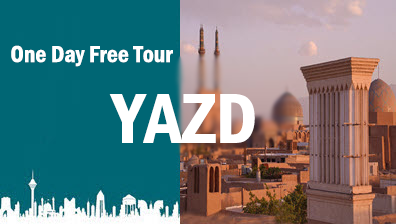Copyright 2020 - 2021 irantour.tours all right reserved
Designed by Behsazanhost
Yazd During history
Yazd During history
Yazd or the city of windcatchers, Qanats, and the first city of Iran recognized as a World Heritage Site by UNESCO is the capital of Yazd Province, located 270 km southeast of Esfahan, Iran. The proximity to the central desert of Iran and its coexistence with the harsh nature of the desert region has made this city a perfect example of desert architecture. It is nicknamed the "City of Windcatchers" from its many examples.
 |
Yazd is proud of its rich collection of historical, cultural, and artistic works. Among them, we can mention the Zoroastrian fire temple, Water reservoirs, old traditional refrigerators, bathes, religious schools, and other historical places. Yazd is also known as the City of Bicycles, because of its old history of bike riders, and the highest amount of bicycles per capita in Iran. It is reported that bicycle culture is entered and developed in Yazd, in contact with European visitors and tourists in the last century.
 |
The word Yazd means God and its name is derived from Yazdegerd I, a Sassanid ruler of Persia. This city has been the main center of settlement for Zoroastrianism since the 3rd century AD. By the influence of Islam on Iran, many Zoroastrians migrated to Yazd and changed it into the main center of the Zoroastrian settlement.
Yazd desert plain has been one of the most important defensive factors of this city against the attack of the enemies and has always kept it safe.
Marco Polo was one of the most famous people who crossed this hot and dry desert and visited the city of Yazd. In 1272 he was visited by Marco Polo, who commented on the city's fine silk-weaving industry. In the book Marco Polo's Travels, he described Yazd as follows:
"It is a good and noble city, and it has a lot of commerce. There they weave quantities of a certain silk fabric known as Yasdi, which merchants take to many places to dispose of. When you leave this city to travel further, you ride for seven days through the great plains, finding a port to receive you only in three places. There are many fine kinds of wood that produce dates along the way, such as one that you can easily traverse; and in them, there is a great sport in hunting and peddling, since there are partridges and quails and abundant other games, so that the merchants who pass by having a lot of fun. There are also wild donkeys, and beautiful creatures. At the end of those seven marches on the plain, you come to a beautiful kingdom called Kerman".
 |
Yazd was chosen as the capital of the Al-Muzaffar dynasty(1350–1351 AH) in the fourth century, and the city's Grand Mosque is considered to be the most important symbol of this historical period. Under the Safavid's rule (16th century), some people migrated from Yazd and settled in an area that is today on the Iran-Afghanistan border. The settlement, which was called Yazdi, was located in what is now the city of Farah in the province of the same name in Afghanistan. Even today, people in this area speak with an accent very similar to that of the Yazd people. During the Qajar dynasty (18th century AD) it was ruled by the Qajar rulers.
- Details
- Category: Yazd Tourism